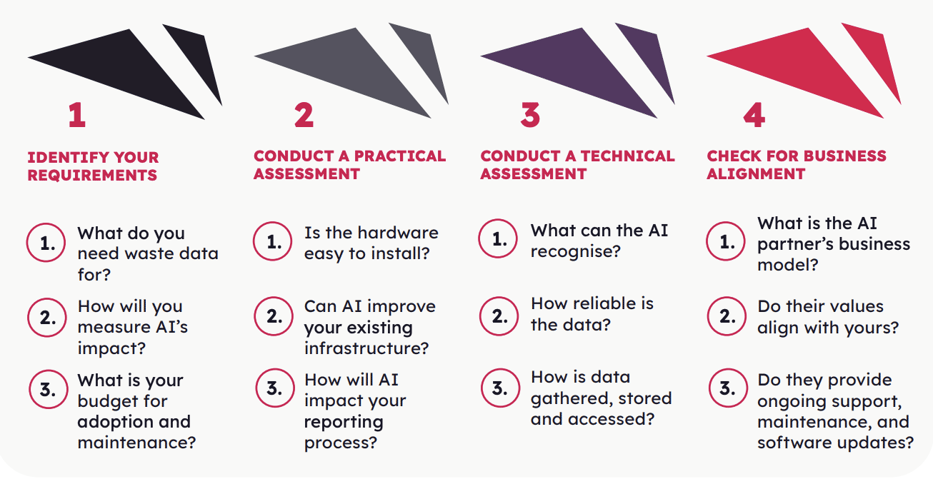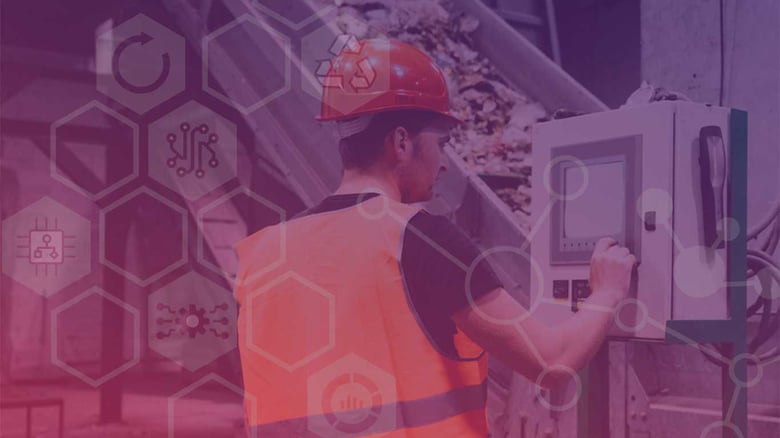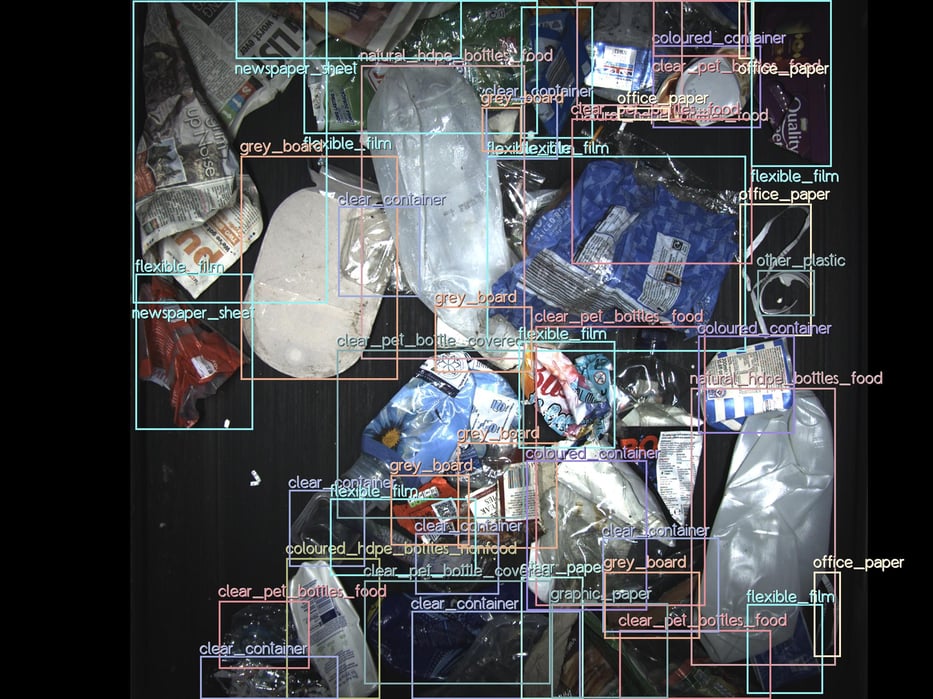In a recent webinar, circularity expert Dr. David Greenfield spoke about artificial intelligence (AI) representing “the cusp of a new revolution in recovery facility technology.”
As with any technological revolution, there’s a learning curve. AI waste analytics has never been more accessible, but we’ve heard from professionals across the sector that comparing one tool to another can be complex.
With that in mind, we set out to demystify the technicalities of waste AI. By assessing a tool’s taxonomy, accuracy and data output, it’s possible to tell whether it has the technical capability to transform your recovery facility operations.
.jpg?width=933&height=526&name=GP-unit-enva-2023-1%20(1).jpg)
1. Taxonomy: What can the AI recognise?
-2.png?width=720&height=526&name=Screenshot%202023-08-07%20at%2015.14.09%20(1)-2.png)
What it is
In the context of waste analytics, an AI’s “taxonomy” is the library of waste objects it can recognise. That library can include material-specific categories (like PET), object type (like “water bottle”), food grade status, brand, stock-keeping unit, and more.
Different systems are “trained” using different sets of data. In the context of waste analytics, those sets of data are real-world images of waste streams. The more waste the system sees, the more objects it will be able to recognise.
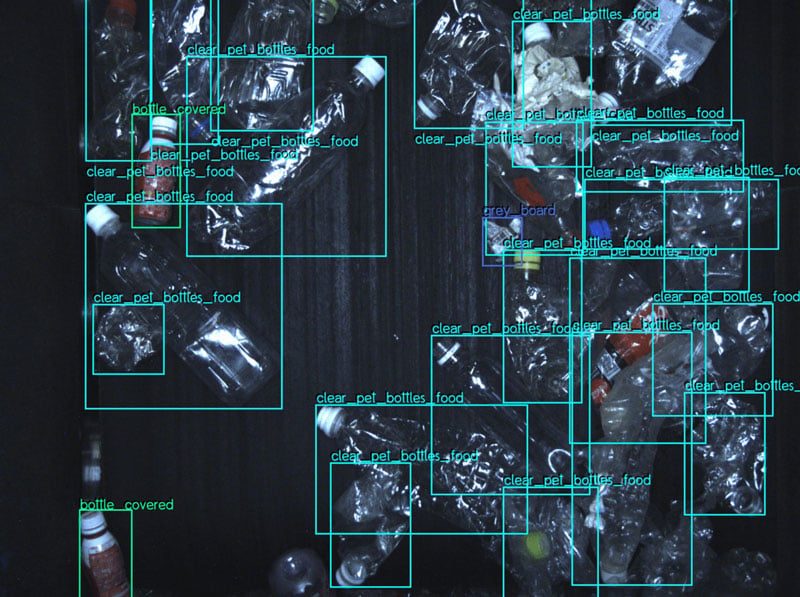
Why it matters
The larger the recognition library, the more detailed the waste data is overall — and the more you understand your waste streams.
You’ll need to ensure that whatever partner you choose has a taxonomy that includes the types of waste you’re interested in. Those processing mixed municipal waste need even more coverage to ensure sorting separates target material from contaminants — often upwards of 80 recognition categories.
It’s a crucial metric — if AI can’t recognise your facility’s target material, for example, it won’t be as useful.
Taxonomy also underpins every insight that an analytics system generates. Once Greyparrot AI recognises a waste object, for example, we are able to estimate its mass, financial value, and potential emissions.
2. Accuracy: How reliable is the data?
What it is
Accuracy rates tell you how reliable a platform’s data is. As with taxonomy, the more images a tool is trained on, the more accurately it will be able to differentiate between waste objects — to train Greyparrot’s AI, for example, we gather data on over 25 billion waste objects every year.
Accuracy can be assessed using two key metrics:
- Composition, which identifies the amount of each material in your waste stream. High composition accuracy means that AI is able to reliably track the composition of the waste stream as it passes over the conveyor belt.
- Throughput, which tells you the mass of those objects. Reliable throughput data means that AI can accurately track the weight of each waste type in the overall stream.
We’ve included general benchmarks for both in our AI buyer’s guide. Each will vary depending on use-case and context — an extremely fast or heavily-loaded conveyor belt could impact accuracy, but the right tool will be able to accommodate most situations without sacrificing efficiency or insight.
Why it matters
A large taxonomy is only useful if AI can reliably recognise what it claims to. That makes accuracy one of the clearest indicators of a platform’s capabilities, and how valuable its insight will be in practice.
 For Re-Gen’s Conor McCooey, that reliability is directly linked to the bottom line
For Re-Gen’s Conor McCooey, that reliability is directly linked to the bottom line
“Accuracy is a massive help for us because we’re trading on our name, and on our brand. We can all stand by our quality stamps. If we couldn’t, our business development team wouldn’t be able to sell our product. Customers are open to buying from us because our quality is so consistent.”
3. Data timelines and delivery - How will you access insight?
What it is
Data is a big subject in the world of waste analytics, but there are a few top-level considerations to take when evaluating a provider.
Data timelines refer to the frequency — or speed — that information is gathered. This can range from semi-regular “snapshots” (similar to manual sampling efforts, albeit cheaper) all the way to a constant, real-time flow of waste data as it passes through a facility.
Access refers to the way in which you’ll actually receive the data and insight that AI generates. Data could be formatted for Excel-style CSV exports, get translated into live analysis on a dedicated dashboard, or integrate with your existing business intelligence tools through an “application programming interface” (API).
If internet connectivity is a challenge for your facility, you could run into interrupted data flows. We have a full breakdown of data continuity in our guide to help overcome connectivity issues.
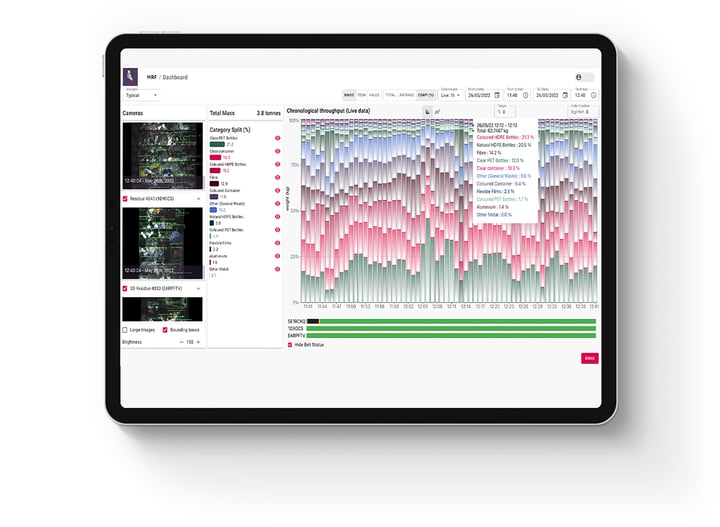
Why it matters
Data timelines need to suit your application.
If you’re looking to increase sorting efficiency by reacting to real-time changes in material quality, you’ll need real-time data. The same goes for improving your existing machinery: a sorting arm will need rapid feedback to pick objects before they pass.
If you’re instead interested in identifying historical trends (like value lost to residue, for example), you won’t need live minute-to-minute data. Ideally, though, whatever provider you choose should be able to cover both timelines — leaving room for experimentation and broader applications in the future.
The format data arrives in should align with your existing processes, or be as intuitive as possible. Intelligent waste analysis is designed to save time, not present another hurdle. The easier it is to integrate AI with your existing tools, the quicker you can adopt the technology and maximise recovery.
Completing the waste analytics procurement puzzle
Evaluate taxonomy, accuracy and data ouput, and you’ll quickly be able to differentiate one tool’s technical capabilities from another, no matter your own technical background.
To make the assessment process even clearer, we’ve provided benchmarks for each of those categories in the “technical assessment” section of our new AI buyer’s guide.
In it, we’ve demystified the entire procurement process, guided by conversations with early adopters across the industry. In just four steps, you’ll learn how to identify your requirements for AI, conduct practical and technical assessments, and ensure a potential provider’s business aligns with yours.
